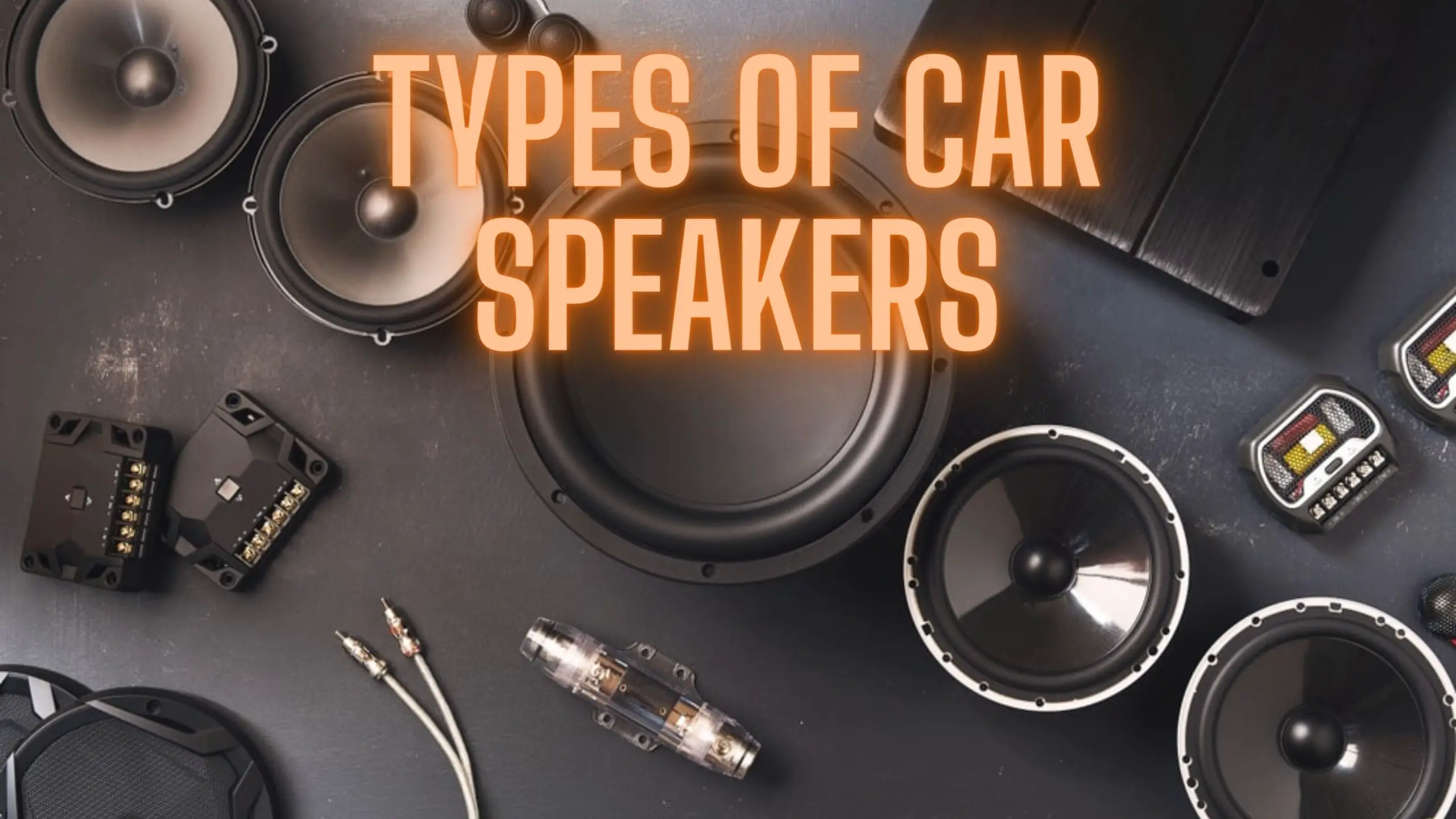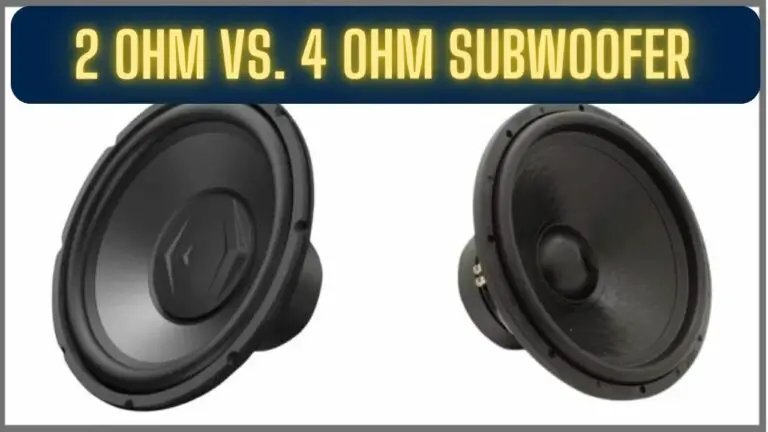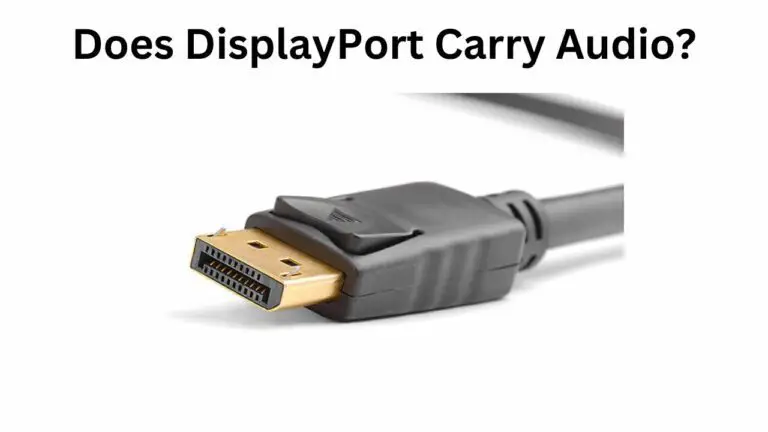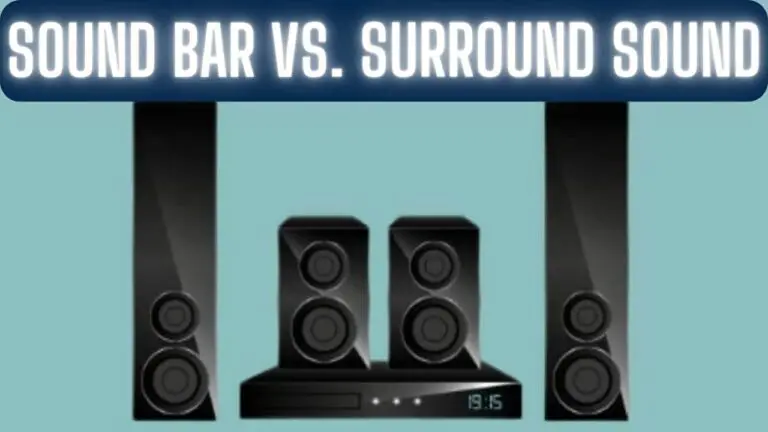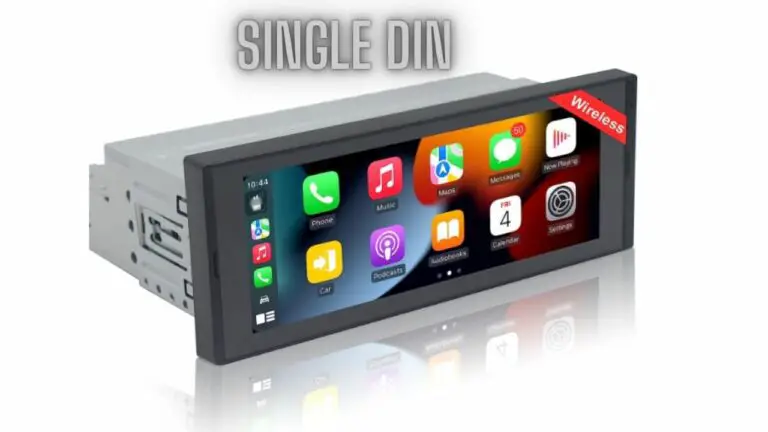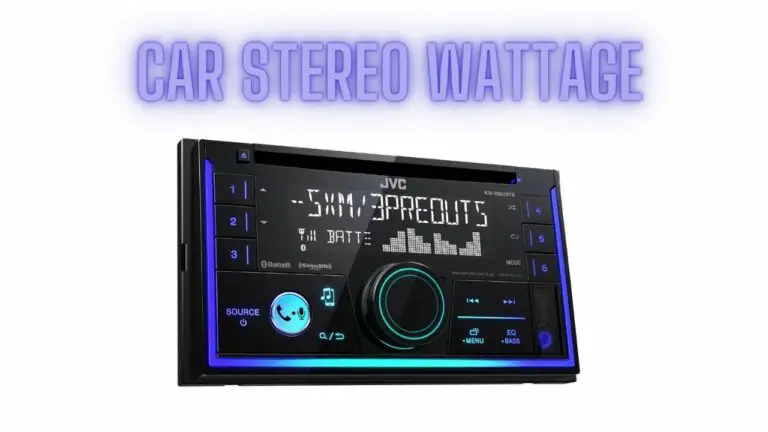Different Types of Car Speakers for Premium Sound Systems
Introduction
Car audio systems have come a long way from the crackling AM radios of the past. Modern vehicles offer a wide array of audio options, including various types of car speakers designed to deliver an immersive and high-quality audio experience. From deep bass to crystal-clear highs, these speakers are engineered to cater to different preferences and musical genres. In this article, we’ll delve into the primary types of car speakers available, each playing a crucial role in creating the perfect sonic landscape inside your vehicle.
Coaxial (Full-Range) Speakers:
Coaxial speakers, also known as full-range speakers, are among the most common types of speakers found in car audio systems. They are designed to reproduce a wide range of frequencies, typically covering the entire audible spectrum from low bass frequencies to high treble frequencies. Coaxial speakers are popular due to their simplicity, ease of installation, and relatively affordable pricing compared to component speaker systems.
Construction
Coaxial speakers consist of multiple speaker elements integrated into a single unit. These typically include:
- Woofers: Responsible for reproducing low-frequency sounds such as bass and mid-bass tones.
- Tweeters: Designed to handle high-frequency sounds, including vocals and cymbals.
- Crossovers: Some coaxial speakers may have built-in passive crossovers to split the audio signal between the woofer and tweeter, ensuring that each component receives the frequencies it is best suited to reproduce.
Advantages
- Simplicity: Coaxial speakers are straightforward to install since all the necessary components are housed in a single unit. This makes them a popular choice for car audio enthusiasts looking for an easy upgrade.
- Cost-Effective: Compared to component speaker systems, coaxial speakers tend to be more budget-friendly while still offering decent sound quality across a wide range of frequencies.
- Space Efficiency: Coaxial speakers take up less space than component speaker systems since they do not require separate mounting locations for the woofers and tweeters.
Considerations
- Sound Quality: While coaxial speakers offer good sound quality for most users, they may not match the performance of high-end component speaker systems, particularly in terms of imaging and soundstage.
- Upgradability: Coaxial speakers may have limitations in terms of upgradability compared to component systems. Upgrading individual components, such as the tweeters or crossovers, may be more challenging with coaxial speakers.
- Power Handling: Depending on the specific model, coaxial speakers may have limitations in power handling capabilities compared to separate component systems, which may affect their ability to handle high volumes or deliver deep bass.
Installation Tips
- Positioning: Install coaxial speakers in factory locations or aftermarket speaker mounts designed for your vehicle to ensure proper alignment and sound dispersion.
- Amplification: While coaxial speakers can be powered by a head unit alone, adding an external amplifier can significantly improve their performance, especially at higher volumes.
- Wiring: Use high-quality speaker wire and connectors to ensure a reliable connection and minimize signal loss.
Conclusion
Coaxial speakers are an excellent choice for car audio enthusiasts seeking a balance between performance, affordability, and ease of installation. While they may not offer the customization options or ultimate sound quality of component speaker systems, they provide a significant upgrade over factory-installed speakers and are suitable for most car audio setups.
Component Speakers:
Component speaker systems are considered the pinnacle of car audio setups for enthusiasts seeking the highest level of sound quality and customization. Unlike coaxial speakers, which integrate multiple speaker elements into a single unit, component speaker systems separate the various components to optimize performance and provide greater flexibility in installation and tuning.
Components
- Woofers: Component speaker systems typically include dedicated woofers designed to handle low-frequency sounds such as bass and mid-bass tones. These woofers are often larger in size compared to those found in coaxial speakers, allowing them to reproduce deeper and more impactful bass.
- Tweeters: Component systems feature separate tweeters dedicated to reproducing high-frequency sounds, including vocals, strings, and cymbals. Tweeters in component systems are usually designed to handle higher frequencies more efficiently than those found in coaxial speakers, resulting in improved clarity and detail in the treble range.
- Crossovers: Component speaker systems utilize external passive crossovers to divide the audio signal into separate frequency bands and route them to the appropriate drivers (woofers and tweeters). These crossovers are typically more advanced than the built-in crossovers found in coaxial speakers, allowing for precise control over crossover points and slopes to achieve optimal sound quality and imaging.
Advantages
- Customization: Component speaker systems offer a high degree of customization, allowing users to mix and match woofers, tweeters, and crossovers to tailor the sound to their preferences and acoustic environment.
- Sound Quality: With dedicated drivers and external crossovers, component speaker systems typically deliver superior sound quality compared to coaxial speakers, especially in terms of imaging, soundstage, and overall clarity across the frequency spectrum.
- Upgradability: Component systems are designed with upgradability in mind, allowing users to replace individual components as needed to accommodate changes in their audio preferences or system requirements.
Considerations
- Installation Complexity: Installing component speaker systems can be more involved than installing coaxial speakers due to the separate mounting locations for woofers and tweeters, as well as the installation of external crossovers.
- Space Requirements: Component systems may require more space for installation compared to coaxial speakers, particularly if surface mounting of tweeters or custom fabrication of speaker enclosures is necessary.
- Cost: Component speaker systems tend to be more expensive than coaxial speakers due to the higher quality components and additional hardware required for installation.
Installation Tips
- Mounting: Install woofers in door panels or custom kick-panel enclosures for optimal bass reproduction. Mount tweeters in locations that provide good imaging and soundstage, such as the A-pillars or sail panels.
- Crossover Placement: Mount external crossovers in accessible locations away from moisture and heat sources, such as inside the vehicle’s cabin or trunk.
- Wiring: Use high-quality speaker wire and connectors to ensure a reliable connection between components and minimize signal loss.
Conclusion
Component speaker systems represent the pinnacle of car audio performance, offering unmatched sound quality, customization options, and upgradability for discerning enthusiasts. While they may require more effort and investment to install compared to coaxial speakers, the sonic rewards they provide make them a worthwhile investment for anyone passionate about car audio.
Subwoofers:
Subwoofers are specialized speakers designed specifically to reproduce low-frequency audio signals, commonly known as bass. In car audio systems, subwoofers play a crucial role in enhancing the overall sound quality by adding depth, impact, and realism to music, particularly in genres like hip-hop, electronic dance music (EDM), and rock. They are available in various sizes, configurations, and designs to suit different preferences and vehicle setups.
Types of Subwoofers
- Powered Subwoofers: These subwoofers incorporate a built-in amplifier within the enclosure, simplifying installation and eliminating the need for an external amplifier. Powered subwoofers are ideal for vehicles with limited space or for users seeking a straightforward upgrade without the complexity of a separate amplifier.
- Passive Subwoofers: Passive subwoofers rely on an external amplifier to power the speaker. They offer greater flexibility in terms of amplifier selection and customization but may require more effort during installation compared to powered subwoofers.
Subwoofer Sizes
Subwoofers come in various sizes, typically measured in inches for the diameter of the speaker cone. Common sizes include:
- 8-inch Subwoofers: Compact and space-efficient, ideal for vehicles with limited trunk space or for users prioritizing agility and responsiveness over sheer bass output.
- 10-inch Subwoofers: A popular choice for many car audio enthusiasts, offering a good balance between bass extension, power handling, and enclosure compatibility.
- 12-inch Subwoofers: Known for their deep, powerful bass reproduction, 12-inch subwoofers are favored by users seeking maximum impact and presence in their car audio systems.
- 15-inch Subwoofers and Larger: These larger subwoofers excel at producing extremely deep bass frequencies and are favored by users aiming for high-output, competition-level bass performance.
Enclosure Types
- Sealed Enclosures: Sealed enclosures provide tight and accurate bass reproduction with minimal distortion. They are relatively compact and can be installed in a variety of locations within the vehicle.
- Ported Enclosures: Ported enclosures utilize a tuned port to enhance bass output and efficiency. They are preferred by users seeking louder, more boomy bass, but they require more space and careful tuning to achieve optimal performance.
- Bandpass Enclosures: Bandpass enclosures are designed to maximize bass output within a specific frequency range while filtering out unwanted frequencies. They offer extreme bass output but are less versatile and may have a narrower frequency response compared to sealed or ported enclosures.
Installation Tips
- Placement: Install subwoofers in the trunk or cargo area of the vehicle to maximize bass output and minimize interference with other components.
- Wiring: Use high-quality speaker wire and connectors to ensure a reliable connection between the subwoofer and amplifier, minimizing signal loss and potential electrical issues.
- Amplification: Match the subwoofer’s power handling capabilities with an appropriate amplifier to prevent distortion and maximize performance. Ensure the amplifier is properly configured and tuned for the subwoofer’s specifications.
Conclusion
Subwoofers are essential components of car audio systems, providing deep, powerful bass that enhances the listening experience and adds excitement to music. Whether you prefer tight and accurate bass or booming low-end extension, there’s a subwoofer configuration and enclosure type to suit your preferences and vehicle setup.
Mid-Range Speakers:
Mid-range speakers, also known as mid-bass drivers or mid-woofers, are an integral component of car audio systems responsible for reproducing frequencies in the mid-range spectrum. They bridge the gap between the low frequencies handled by subwoofers and the high frequencies produced by tweeters, ensuring a balanced and coherent soundstage throughout the audible range. Mid-range speakers are crucial for reproducing vocals, instruments, and other critical elements of music with clarity and accuracy.
Characteristics
- Frequency Range: Mid-range speakers typically cover frequencies ranging from around 100 Hz to 5 kHz, although the specific range may vary depending on the speaker’s design and capabilities.
- Size and Configuration: Mid-range speakers come in various sizes, commonly ranging from 3 inches to 8 inches in diameter. They are available in both single cone and multiple cone configurations, with larger drivers generally capable of producing deeper bass frequencies.
- Materials: Mid-range speaker cones are often made from materials such as paper, polypropylene, kevlar, or composite materials like fiberglass or carbon fiber. The choice of material affects the speaker’s stiffness, weight, and damping characteristics, ultimately influencing its frequency response and sound quality.
Integration with Component Systems
In component speaker systems, mid-range speakers work in conjunction with woofers and tweeters to achieve a smooth transition between frequency bands and ensure accurate reproduction of the entire audio spectrum. Proper crossover design and tuning are essential to ensure seamless integration and optimal performance across all drivers.
Applications
- In-Car Audio Systems: Mid-range speakers are commonly used in car audio systems to reproduce vocals, mid-range instruments, and other critical elements of music with clarity and detail. They contribute to a well-balanced soundstage and enhance the overall listening experience, particularly in vehicles with limited space for larger speakers.
- Home Audio Systems: Mid-range drivers are also utilized in home audio systems, typically as part of multi-way speaker designs alongside tweeters and woofers. They play a crucial role in reproducing the majority of audio content, including vocals, guitars, pianos, and other mid-range instruments.
Installation Tips
- Mounting: Install mid-range speakers in door panels or custom kick-panel enclosures to ensure optimal placement and alignment with the listener’s ears. Use appropriate mounting adapters and gaskets to minimize vibration and ensure a tight seal.
- Amplification: Provide adequate power to mid-range speakers by matching them with an amplifier capable of delivering clean and dynamic sound. Ensure proper gain settings and crossover adjustments to prevent distortion and optimize performance.
- Acoustic Treatment: Implement acoustic treatments such as sound deadening materials and speaker baffles to minimize resonance and improve mid-range clarity and imaging.
Conclusion
Mid-range speakers play a critical role in car audio systems, delivering clear and detailed reproduction of vocals and instruments across the mid-range frequency spectrum. Whether as part of a component system or standalone speakers, mid-range drivers contribute to a well-balanced soundstage and an immersive listening experience, making them essential components for audio enthusiasts and music lovers alike.
Tweeters:
Tweeters are specialized speakers designed to reproduce high-frequency audio signals, primarily responsible for handling treble frequencies in car audio systems. They play a crucial role in reproducing vocals, cymbals, strings, and other high-pitched sounds with clarity and detail. Tweeters are available in various designs and configurations to suit different preferences and listening environments.
Types of Tweeters
- Dome Tweeters: Dome tweeters feature a dome-shaped diaphragm typically made of materials such as silk, fabric, or metal (such as aluminum or titanium). Dome tweeters offer a balanced combination of smooth frequency response and wide dispersion, making them suitable for a wide range of music genres and listening preferences.
- Piezoelectric Tweeters: Piezoelectric tweeters utilize a piezoelectric crystal or ceramic element to generate sound waves when subjected to an electrical signal. They are known for their high efficiency and extended high-frequency response, making them suitable for applications requiring crisp and bright treble reproduction.
- Horn Tweeters: Horn tweeters employ a horn-shaped structure to increase efficiency and directivity, resulting in improved dispersion and projection of high-frequency sound waves. They are often used in high-output audio systems or applications requiring long-range sound projection, such as outdoor events or public address systems.
Characteristics
- Frequency Range: Tweeters typically cover frequencies ranging from around 2 kHz to 20 kHz, although some models may extend beyond this range. Their primary function is to reproduce high-frequency content with clarity and accuracy, complementing the mid-range and low-frequency drivers in a multi-way speaker system.
- Mounting Options: Tweeters can be mounted in various locations within the vehicle, including the dashboard, door panels, A-pillars, sail panels, or custom kick-panel enclosures. Proper tweeter placement is essential to achieve optimal imaging, soundstage, and dispersion characteristics.
- Crossover Integration: Tweeters in component speaker systems are often paired with external passive crossovers to divide the audio signal and route high-frequency content to the tweeters while directing lower frequencies to mid-range or woofer drivers. Proper crossover design and tuning are essential to ensure seamless integration and balanced sound reproduction.
Installation Tips
- Mounting: Install tweeters at ear level or aimed towards the listener’s ears to optimize imaging and soundstage. Use mounting adapters or custom fabrication to achieve proper alignment and integration with the vehicle’s interior.
- Wiring: Use high-quality speaker wire and connectors to ensure a reliable connection between the tweeters and crossover network. Proper wire routing and management are essential to minimize interference and signal degradation.
- Acoustic Treatment: Implement acoustic treatments such as foam baffles or sound deadening materials around tweeters to minimize resonance and improve clarity. Experiment with tweeter positioning and orientation to achieve the best possible sound quality.
Conclusion
Tweeters are essential components of car audio systems, contributing to the overall clarity, detail, and realism of the listening experience. Whether as part of a component speaker system or standalone tweeters, they play a crucial role in reproducing high-frequency content with accuracy and finesse, enhancing the enjoyment of music and audio content for drivers and passengers alike.
Super Tweeters:
Super tweeters are specialized high-frequency speakers designed to reproduce ultra-high frequencies beyond the range of conventional tweeters. They enhance the uppermost octave of audio playback, adding sparkle, airiness, and detail to the sound. While conventional tweeters typically cover frequencies up to 20 kHz, super tweeters extend the frequency response well beyond this range, reaching frequencies as high as 100 kHz or more. Although these frequencies are beyond the range of human hearing, their presence can influence the overall sound perception and contribute to a more spacious and detailed audio experience.
Characteristics
- Frequency Range: Super tweeters typically cover frequencies beyond 20 kHz, extending up to 100 kHz or higher. While these frequencies are not audible to humans, they can influence the harmonics and overtones present in the audible range, contributing to perceived clarity and detail in the sound.
- Design: Super tweeters often feature exotic materials and specialized diaphragm designs optimized for ultra-high-frequency reproduction. Examples include beryllium, diamond, and ceramic diaphragms, as well as ribbon or planar magnetic driver designs known for their low mass and fast transient response.
- Mounting Options: Super tweeters can be mounted alongside conventional tweeters in a component speaker system or used as standalone units to complement existing speakers. They are typically mounted at ear level or aimed towards the listener’s ears to optimize dispersion and imaging.
Benefits
- Enhanced Detail: Super tweeters reproduce subtle nuances and micro-details in music that may be otherwise masked by conventional tweeters. They add a sense of airiness and openness to the sound, allowing listeners to perceive additional depth and dimension in the audio playback.
- Improved Soundstage: By extending the frequency response beyond the audible range, super tweeters contribute to a more expansive and immersive soundstage. They create a sense of space and separation between instruments and vocals, enhancing the overall realism and presence of the sound.
- Harmonic Enrichment: Super tweeters reproduce harmonics and overtones present in the uppermost octave of audio content, enriching the tonal character and timbre of instruments and vocals. This can result in a more lifelike and engaging listening experience, particularly with well-recorded music or high-resolution audio formats.
Installation Tips
- Integration: Integrate super tweeters with existing speakers using a compatible crossover network to ensure seamless integration and balanced frequency response. Experiment with crossover settings and tweeter placement to achieve optimal imaging and dispersion characteristics.
- Amplification: Provide adequate power to super tweeters by matching them with an amplifier capable of delivering clean and dynamic sound. Ensure proper gain settings and crossover adjustments to prevent distortion and optimize performance.
- Listening Tests: Conduct listening tests and adjustments to fine-tune the super tweeters’ placement and settings for the best possible sound quality. Pay attention to subtle changes in detail, imaging, and soundstage as you optimize the system configuration.
Conclusion
Super tweeters are advanced audio components that push the boundaries of high-frequency reproduction, enhancing the overall clarity, detail, and realism of the listening experience. Whether used as part of a component speaker system or standalone units, they offer audiophiles and enthusiasts an opportunity to explore the uppermost reaches of audio playback, uncovering new layers of depth and richness in their favorite music and audio content.
Horn Speakers:
Horn speakers are a type of loudspeaker that utilizes a horn-shaped structure to enhance efficiency, directivity, and sound pressure levels. They are known for their high sensitivity and ability to produce loud and clear sound with relatively low power input, making them popular choices for live sound reinforcement, public address systems, and high-fidelity audio applications, including car audio systems.
Design and Operation
Horn speakers consist of several key components:
- Horn: The horn is the most distinctive feature of horn speakers. It serves to acoustically load the driver and efficiently couple the sound produced by the driver to the surrounding air. The horn’s shape and size determine the speaker’s directivity, dispersion pattern, and overall efficiency.
- Driver: The driver, also known as the transducer, is the component that converts electrical signals into sound waves. In horn speakers, drivers are often compression drivers or piezoelectric drivers, chosen for their ability to efficiently drive the horn and produce high sound pressure levels.
- Crossover: In multi-way horn speaker systems, crossovers are used to divide the audio signal into separate frequency bands and route them to the appropriate drivers. Proper crossover design and tuning are essential to achieve seamless integration between the horn and other drivers in the system.
Benefits
- High Efficiency: Horn speakers are renowned for their high sensitivity and efficiency, allowing them to produce significant sound pressure levels with relatively low power input. This efficiency makes them ideal for applications where high output levels are required, such as outdoor events or large venues.
- Controlled Directivity: The horn’s design influences the speaker’s directivity pattern, focusing sound energy in a specific direction and minimizing dispersion losses. This controlled directivity improves sound coverage and reduces the risk of feedback or unwanted reflections in live sound reinforcement applications.
- Dynamic Range: Horn speakers are capable of reproducing a wide dynamic range, from whisper-quiet passages to thunderous peaks, with minimal distortion or compression. This ability to faithfully reproduce dynamic music passages adds excitement and realism to the listening experience.
Applications
- Live Sound Reinforcement: Horn speakers are commonly used in concert venues, stadiums, and outdoor events for their ability to deliver powerful and intelligible sound over long distances. Their high sensitivity and directional control make them well-suited for large-scale sound reinforcement applications.
- Public Address Systems: Horn speakers are frequently employed in public address systems for announcements, paging, and emergency notifications. Their efficiency and clarity ensure that important messages are heard clearly, even in noisy environments or over long distances.
- High-Fidelity Audio: In home audio and car audio systems, horn speakers are prized for their ability to reproduce music with clarity, detail, and dynamic impact. They offer audiophiles an alternative to traditional cone drivers, with the potential for exceptional sound quality and realism.
Installation Tips
- Placement: Install horn speakers in locations that optimize their directivity and coverage pattern, such as elevated positions or corners of the listening area. Experiment with placement and orientation to achieve the best possible sound dispersion and imaging.
- Amplification: Match horn speakers with amplifiers capable of delivering sufficient power and current to drive them to their full potential. Pay attention to amplifier sensitivity ratings and impedance matching to prevent damage and ensure optimal performance.
- Acoustic Treatment: Implement acoustic treatments such as bass traps, diffusers, and absorbers to optimize the listening environment and minimize room reflections or resonances that may affect horn speaker performance.
Conclusion
Horn speakers are a versatile and powerful audio technology known for their high efficiency, controlled directivity, and dynamic range. Whether used for live sound reinforcement, public address systems, or high-fidelity audio applications, they offer a compelling combination of performance and versatility that makes them a favorite among audio professionals and enthusiasts alike.
Powered Speakers:
Powered speakers, also known as active speakers, have a built-in amplifier, eliminating the need for an external amplifier. They simplify installation and can be a convenient option for those looking to upgrade their audio system without extensive modifications.
Key Considerations When Choosing New Car Speakers
Upgrading your car’s audio system with new speakers can significantly enhance your driving experience, allowing you to enjoy your favorite music with greater clarity and depth. However, selecting the right car speakers involves several important considerations. Here are some factors to keep in mind while getting new car speakers:
1. Speaker Type:
Understand the different types of car speakers available, such as coaxial (full-range), component, subwoofers, tweeters, and more. Each type serves a specific purpose in the audio spectrum. Decide which type or combination of types will best suit your audio preferences and vehicle setup.
2. Sound Quality:
Consider the sound quality you’re aiming for. If you’re an audiophile seeking top-notch performance, component speakers with separate woofers and tweeters might be your best choice. If you want a simple upgrade from your factory speakers, coaxial speakers can provide improved sound without extensive modifications.
3. Power Handling:
Check the power handling capabilities of the speakers. Power handling refers to the maximum amount of power a speaker can handle without distortion or damage. Match the power handling of the speakers with your car’s amplifier or head unit to ensure proper performance.
4. Sensitivity:
Sensitivity is the measure of how efficiently a speaker converts power into sound. Higher sensitivity speakers require less power to produce the same volume as lower sensitivity speakers. Consider your car’s audio setup and power source to determine the appropriate sensitivity for your needs.
5. Frequency Response:
Frequency response indicates the range of frequencies a speaker can reproduce. Look for speakers with a wide frequency response to ensure a balanced audio experience that covers both low and high frequencies.
6. Speaker Size:
Ensure that the speakers you choose fit your vehicle’s speaker locations. Common sizes include 6.5-inch, 6×9-inch, and 5.25-inch speakers. Measure your existing speakers or consult your vehicle’s manual to determine the compatible sizes.
7. Installation Space:
Consider the available installation space in your car. Some speakers, like subwoofers, might require additional enclosures or modifications to fit properly. Component systems might require more space due to separate speaker elements.
8. Budget:
Set a budget for your speaker upgrade and explore options within that range. High-quality speakers come in a variety of price points, so you can find options that deliver excellent performance without breaking the bank.
9. Brand and Reputation:
Choose reputable speaker brands known for their quality and durability. Research customer reviews, expert opinions, and user experiences to get a sense of the brand’s reputation in the audio community.
10. Amplification:
Consider whether you’ll need an external amplifier to power your new speakers effectively. Some high-end speakers may require additional amplification to unleash their full potential.
11. Listening Environment:
Think about the type of music you enjoy and your typical driving conditions. If you listen to a wide range of genres, speakers with good frequency response and balance are essential. If you prefer bass-heavy music, consider incorporating subwoofers into your setup.
12. Installation:
Evaluate whether you’re comfortable with the installation process. While coaxial speakers are relatively straightforward to install, component systems might require more technical know-how. You can choose to install the speakers yourself or have them professionally installed.
By carefully considering these factors, you can make an informed decision when selecting new car speakers that align with your audio preferences and vehicle’s capabilities. A well-chosen speaker upgrade can transform your driving time into an enjoyable and immersive sonic experience.
Different Types of Car Speakers FAQS
What are coaxial speakers, and how do they differ from component speakers?
Coaxial speakers, also known as full-range speakers, combine multiple speaker elements (such as woofers and tweeters) in a single unit. They are often factory-installed in many vehicles. Component speakers consist of separate components (woofers, tweeters, and sometimes mid-range drivers) for better sound quality and customization. Component systems offer improved soundstage and clarity.
What’s the purpose of a subwoofer in a car audio system?
Subwoofers are designed to reproduce low-frequency sounds, commonly referred to as bass. They add depth and impact to music, especially genres like hip-hop and electronic. Subwoofers come in various sizes and require a separate amplifier due to their power demands.
How do tweeters and super tweeters differ?
Tweeters reproduce high-frequency sounds, like cymbals and vocals. Super tweeters go even higher, producing ultrasonic frequencies that enhance harmonic richness. Super tweeters interact with audible frequencies, enhancing the overall audio experience.
What’s the difference between coaxial and 3-way speakers?
Coaxial speakers usually have two main components: a woofer and a tweeter. 3-way speakers, on the other hand, incorporate three components: a woofer, mid-range driver, and tweeter. 3-way systems offer more precise frequency separation and can produce a wider range of frequencies.
Are component speakers better than coaxial speakers?
Component speakers are generally favored by audiophiles seeking superior sound quality due to their ability to separate speaker elements. However, both component and coaxial speakers have their strengths, and the choice depends on your preferences, budget, and the level of customization you want.
Can I mix different types of car speakers in my audio setup?
Yes, you can mix different types of speakers in your setup. For example, you could have coaxial speakers in the rear for rear-fill sound and component speakers in the front for better imaging. Just ensure that the speakers are compatible with your audio system and that you balance their sound characteristics.
How do I know which speaker size is suitable for my vehicle?
Refer to your vehicle’s manual or measure the existing speaker locations to determine the appropriate size. Common sizes include 6.5-inch, 6×9-inch, and 5.25-inch speakers. It’s essential to choose speakers that fit your vehicle’s speaker mounts.
Can I install car speakers myself, or do I need professional help?
Coaxial speakers are relatively easy to install and can be a DIY project for those with basic technical skills. Component speaker installation might require more expertise due to separate elements and positioning considerations. Professional installation ensures proper placement and optimal sound quality.
Do I need an amplifier for my car speakers?
It depends on your speaker choice and audio preferences. While some speakers can be powered directly by your car’s head unit, others might benefit from an external amplifier to achieve their full potential in terms of power and clarity.
How do I find the right balance between bass and other frequencies?
Choosing the right combination of speakers, including subwoofers and woofers, can help achieve the desired balance between bass and other frequencies. Tuning your audio system and using an equalizer can also help fine-tune the sound to your preferences.
What are horn speakers, and when are they used?
Horn speakers use horn-shaped enclosures to amplify sound and are known for their efficiency and dynamic range. They’re often used in high-fidelity and high-power audio setups where power efficiency and clarity are critical.
Conclusion
Selecting the right type of car speakers depends on your personal preferences, the desired audio quality, and your vehicle’s space constraints. Whether you’re aiming for a well-balanced sound or a bass-heavy experience, the diverse range of car speaker options ensures that you can tailor your car audio system to match your musical tastes. To achieve the best results, consider consulting with audio professionals and researching different speaker brands and models to find the perfect fit for your car and audio preferences.

